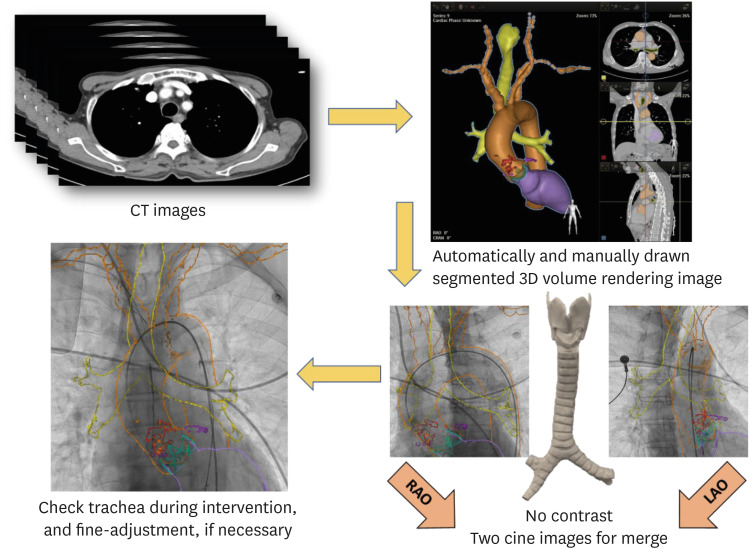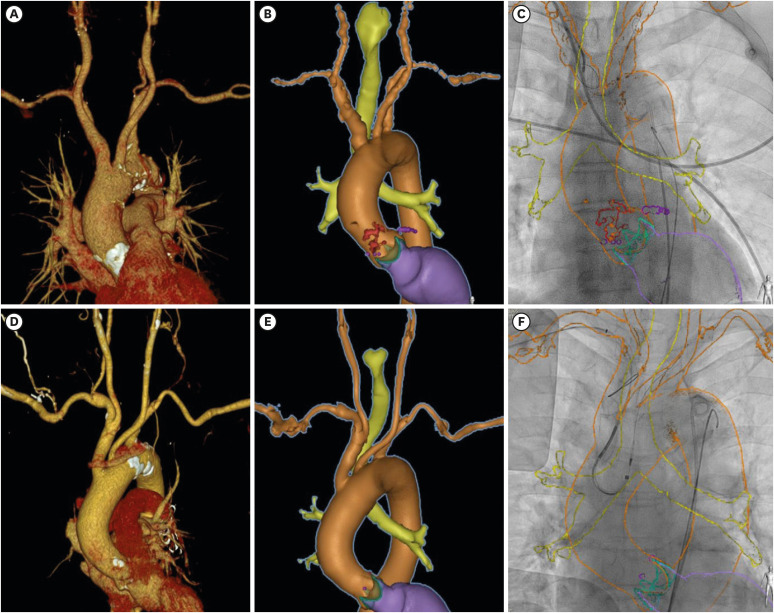Korean Circ J.
2023 Nov;53(11):790-792. 10.4070/kcj.2023.0190.
Merging CT on Fluoroscopic Imaging Using the Trachea as a Reference Without Contrast
- Affiliations
-
- 1Division of Cardiology, Department of Internal Medicine, Keimyung University Dongsan Hospital, Daegu, Korea
- 2Department of Radiology, Keimyung University Dongsan Hospital, Daegu, Korea
- KMID: 2548242
- DOI: http://doi.org/10.4070/kcj.2023.0190



